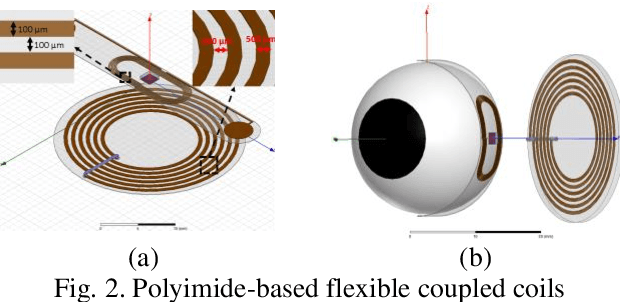Wing-Hung Ki
Polyimide-Based Flexible Coupled-Coils Design and Load-Shift Keying Analysis
Feb 02, 2021



Abstract:Wireless power transfer using inductive coupling is commonly used for medical implantable devices. The design of the secondary coil on the implantable device is important as it will affect the power transfer efficiency, the size of the implant, and also the data transmission between the implant and the in-vitro controller. In this paper, we present a design of the secondary coil on a polyimide-based flexible substrate to achieve high power transfer efficiency. Load shift keying modulation is used for the data communication between the primary and secondary coils. A thorough analysis is done for the ideal and practical scenario and it shows that a mismatched secondary LC tank will affect the communication range and communication correctness. A solution to achieve robust data transmission is proposed and then verified by SPICE simulations.
 Add to Chrome
Add to Chrome Add to Firefox
Add to Firefox Add to Edge
Add to Edge